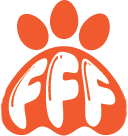Training your dog is one of the most rewarding aspects of being a pet owner. It strengthens the bond between you and your dog, ensures their safety, and promotes positive behavior. Whether you’ve just brought home a new puppy or you’re working with an older dog, understanding the right dog training techniques can make the process smoother and more enjoyable. In this blog, we’ll explore some key strategies for obedience training for dogs, including positive reinforcement training and puppy training tips to help you succeed.
1. Why Obedience Training is Important
Obedience training is the foundation for a well-behaved dog. It helps you communicate with your dog, teaches them how to behave in various situations, and reduces undesirable behaviors such as jumping, chewing, or barking excessively.
Key benefits of obedience training for dogs include:
- Safety: A well-trained dog will respond to commands like “come” or “stay,” keeping them safe in potentially dangerous situations.
- Improved Behavior: Obedience training addresses unwanted behaviors like pulling on the leash, excessive barking, or destructive chewing.
- Better Bond: Training helps build trust and strengthens the bond between you and your dog.
2. Dog Training Techniques for Success
Training a dog requires patience, consistency, and understanding. Here are some of the most effective dog training techniques that can help ensure success.
Positive Reinforcement Training
Positive reinforcement is one of the most popular and effective methods for how to train a dog. This technique focuses on rewarding good behavior to encourage your dog to repeat it. Rewards can include treats, praise, or playtime, depending on what motivates your dog.
How to Use Positive Reinforcement:
- Reward Immediately: When your dog performs the desired behavior, reward them right away. This helps them associate the action with the reward.
- Be Consistent: Consistency is key. Make sure to reward the same behavior each time to reinforce the learning process.
- Avoid Punishment: Punishment or negative reinforcement can create fear and confusion in your dog. Focus on rewarding good behavior rather than punishing mistakes.
Positive reinforcement is especially useful for puppy training tips, as it helps young dogs learn quickly and happily.
Clicker Training
Clicker training is a form of positive reinforcement training that uses a small device (a clicker) to mark the exact moment your dog performs the desired behavior. The “click” sound acts as a signal that your dog has done something right and will be rewarded.
How Clicker Training Works:
- Pair the Click with a Reward: Start by clicking the device and immediately giving your dog a treat. This teaches them to associate the click with a positive outcome.
- Click for Good Behavior: Use the clicker when your dog performs the behavior you’re training, such as sitting or staying. The click helps them understand exactly what they did to earn the reward.
Lure and Reward Training
This technique is commonly used for teaching basic commands like “sit,” “down,” or “stay.” It involves using a treat to lure your dog into the desired position and then rewarding them once they perform the behavior.
How to Use Lure and Reward:
- Hold a Treat Close: Hold a treat in front of your dog’s nose and slowly move it in the direction you want them to go (e.g., up for a sit, down for a lie-down).
- Reward When They Follow: Once your dog follows the treat and performs the desired action, give them the treat as a reward.
This method works well for puppies who are just starting to learn basic commands and helps build a foundation for future training.
Modeling
Modeling is a technique where you physically guide your dog into the desired position to show them what behavior you’re asking for. For example, you might gently guide a dog into a sitting position while saying “sit.”
How to Use Modeling:
- Guide Gently: Use a light touch to help your dog understand what you’re asking them to do. Always be gentle to avoid causing stress or discomfort.
- Reward After Success: As soon as your dog follows your guidance, reward them to reinforce the behavior.
Modeling is often helpful for dogs who are not responding to verbal commands alone.
3. Obedience Training for Dogs: Basic Commands
Teaching basic obedience commands is the foundation of any training program. Here are the essential commands every dog should know:
Sit
The “sit” command is one of the first things many dog owners teach. It’s a simple and effective way to get your dog to stop jumping, stay calm, or wait patiently.
- How to Train It: Hold a treat close to your dog’s nose and slowly move it upwards. As they lift their head to follow the treat, their bottom will naturally lower to the ground. Once they sit, say “sit” and reward them.
Stay
The “stay” command is useful for keeping your dog in place and preventing them from running off or jumping on people.
- How to Train It: Ask your dog to sit, then open your hand in front of them and say “stay.” Slowly take a step back. If they remain in place, reward them. Gradually increase the distance and duration of the “stay” over time.
Come
The “come” command is essential for your dog’s safety, especially when they are off-leash or in an unfamiliar area.
- How to Train It: Start with your dog on a leash. Gently pull them toward you while saying “come” and reward them when they reach you. Gradually practice this off-leash in a safe, enclosed area.
Down
The “down” command is useful for calming your dog or keeping them from jumping up on people.
- How to Train It: Hold a treat in your hand, bring it close to your dog’s nose, and then move it slowly toward the ground. Once they follow the treat and lie down, say “down” and reward them.
4. Puppy Training Tips
Training a puppy requires extra patience and care. Here are some puppy training tips to get your young dog off to the right start:
- Start Early: Begin training your puppy as soon as you bring them home. The earlier they start learning, the easier it will be to instill good behavior.
- Keep Sessions Short: Puppies have shorter attention spans, so keep training sessions brief (5-10 minutes) and fun.
- Socialize Your Puppy: Expose your puppy to various people, environments, and other dogs to help them develop confidence and good social behavior.
- Crate Training: Crate training can help with housebreaking and provide your puppy with a safe, secure place to relax. Be sure to introduce the crate gradually and make it a positive experience.
5. Tips for Successful Obedience Training
- Consistency is Key: Use the same words, commands, and tone of voice every time you train your dog. Consistency helps them understand what’s expected.
- Train in Short Sessions: Dogs, especially puppies, learn best with short, frequent training sessions. Aim for 10-15 minutes at a time, a few times a day.
- End on a Positive Note: Always finish training sessions with success, even if it’s something simple like a sit command. This leaves your dog feeling accomplished and eager for the next session.
6. When to Seek Professional Help
If you’re struggling with how to train a dog or dealing with persistent behavioral issues, seeking the help of a professional dog trainer can be beneficial. Professional training provides personalized guidance and techniques to address specific challenges, ensuring your dog receives the training they need to thrive.
Conclusion
Training your dog with effective dog training techniques can lead to a happy, well-behaved pet. Whether you’re working on basic commands or addressing specific behaviors, using methods like positive reinforcement training can make the process enjoyable for both you and your dog. Remember, consistency, patience, and understanding are key to successful obedience training for dogs. Start with simple commands, keep sessions fun, and don’t hesitate to seek help if needed.

